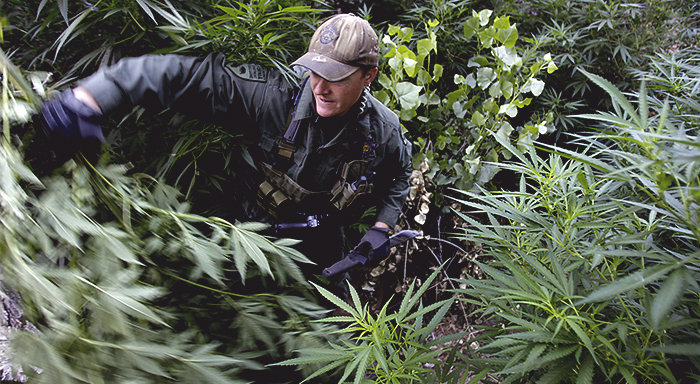The Drug Enforcement Administration warned in June that marijuana grow houses in Colorado are “the new meth houses,” and some players in the local cannabis industry see the point being made.
The June report, written by the DEA’s Denver division, highlights large-scale medical marijuana growing operations hidden in residential neighborhoods throughout Colorado, the first state in the union to legalize medicinal and recreational marijuana.
These operations lead to complaints about “strong odors, excessive noise from industrial air-conditioning units, blown electrical transformers, and heavy vehicle traffic,” according to the DEA.
The DEA also laments the need for high-powered lighting, water, and ventilation used in marijuana operations. Haphazard and amateurish setups could result in serious damage to homes and surrounding areas, the Agency warns.
“Since 2014, there has been a noticeable increase in organized networks of sophisticated residential grows in Colorado that are orchestrated and operated by drug-trafficking organizations,” according to the report.
MERRY JANE reached out to numerous Colorado-based cultivators and entrepreneurs for their thoughts, and the responses were varied.
Some felt it was a false equivalence. “Cannabis is a plant, meth is a chemical compound made from caustic and deadly chemicals,” said medical cannabis grower, author, and lifetime cannabis activist Jorge Cervantes. “Cannabis contains cannabinoids, meth does not. Cannabis is not physically addictive. Meth is super addictive. Cannabis has a completely different chemical structure than methamphetamine. Cannabis cultivators increase Colorado state tax revenue. Cannabis cultivators stimulate the Colorado economy by providing jobs and spending money in the local economy. Cannabis cultivators draw tourists to Colorado.”
Tyler Henson, President of the Colorado Cannabis Chamber of Commerce, a non-profit chamber of commerce focused on cannabis business policies, took a more reserved approach.
“The type of damage that a meth house does to a building can’t compare to the damage that an unlicensed residential grow operation can do,” Henson said. “But I do understand where [the DEA] is coming from. [Unregulated large scale medical grows] are somewhat a new version of meth houses, because large-scale marijuana grow operations in residential properties, which are not suited for commercial agricultural production, damage property. We see this in Colorado happen frequently with unlicensed grows.”
The amount of humidity and energy needed can cause water damage to drywall, leading to rot and black mold, which destroys home values. “The homes are usually rented by growers and the owners face tens of thousands in damage to residential properties,” Henson noted.
According to the DEA, which may soon re-classify cannabis and change aspects of the cannabis landscape, unscrupulous growers produce massive quantities of marijuana and ship and sell the product outside of the state for higher prices. The DEA report fails to posit how much marijuana is being shipped outside of Colorado’s borders. A May report suggests marijuana smuggling offenses have fallen in recent years. For Henson, a big part of the solution to this is for the state’s surrounding Colorado to regulate marijuana.
Drew Pleibani, CEO of Colorado-based Commercial Cultivator, Inc., told MERRY JANE that he’s heard about large-scale, unregulated medical grows causing damage but never actually witnessed that with his own eyes.
“I don’t know about meth houses, but my impression is that they tend to blow up?” he said. “I haven’t heard of an indoor grow op exploding….”
The biology-minded cultivation entrepreneur added: “I don’t see large-scale, unregulated grows as beneficial to the local economy or environment. Certainly tax revenue generated from legal cannabis cultivation can be quantified.”











